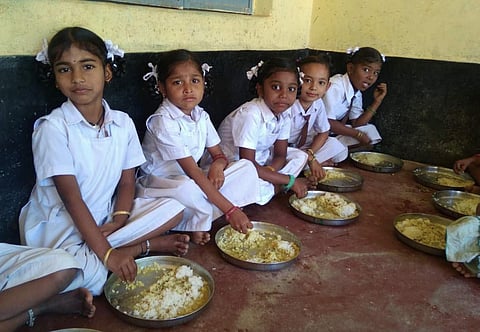

At a time when students in Puducherry are receiving fruits and biscuits in government schools for breakfast, it is time to look at the Mid-Day Meal Scheme (MDMS). It is a school lunch programme implemented by the Government of India to improve the nutritional levels and educational outcomes of children in government and government-aided schools. The scheme provides a cooked meal to children in Classes I-VIII, and the menu is designed to be nutritious and diverse.
The following are some of the varieties of food that are typically given to students as part of the mid-day meals:
- Rice/wheat with dal (lentils)
- Vegetables (sautéed, boiled, or curried)
- Eggs (hard-boiled or scrambled)
- Milk
- Fruits (fresh or dried)
- Snacks (such as biscuits, bread, or puffed rice)
The specific foods that are served vary depending on the region, the availability of ingredients, and the season. However, the mid-day meals guidelines stipulate that the meals must meet certain nutritional requirements, such as providing at least 450 calories and 12 grams of protein for children in Classes I-V, and 700 calories and 20 grams of protein for children in Classes VI-VIII.
In addition to providing nutritious food, the mid-day meals also help to improve the attendance and retention rates of students in school. Studies have shown that children who receive mid-day meals are more likely to attend school regularly and to perform better academically. The scheme also has the potential to reduce malnutrition among children, which is a major problem in India.
It is a critical part of the government's efforts to improve the health and education of its citizens.
Here are some additional details about the varieties of food that are given to students as part of the mid-day meals:
Rice/wheat: These are the most common staples in the Indian diet, and they provide carbohydrates and energy.
Dal: Lentils are a good source of protein, fibre, and iron.
Vegetables: Vegetables are a good source of vitamins, minerals, and fibre. A variety of vegetables are used in the MDMS, such as potatoes, tomatoes, carrots, and beans.
Eggs: Eggs are a good source of protein and iron. They are also a relatively affordable source of animal protein, which is important for children who may not have access to other sources of meat.
Milk: Milk is a good source of calcium, protein, and other nutrients. It is also a good way to provide children with hydration.
Fruits: Fruits are a good source of vitamins, minerals, and fibre. A variety of fruits are used in the MDMS, such as bananas, apples, oranges, and grapes.
Snacks: Snacks are provided to children in the MDMS to help them stay active throughout the day. Some common snacks include biscuits, bread, and puffed rice.
